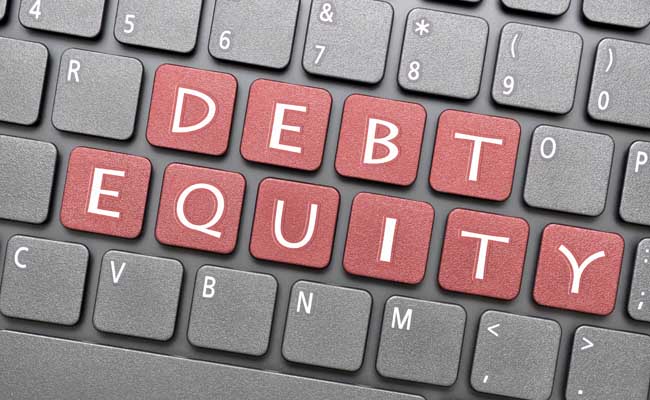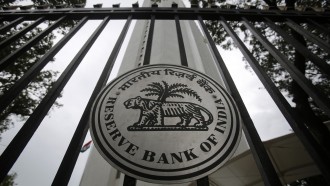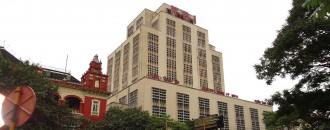
RBI-SEBI initiative of debt to equity conversion not enough
The Dollar Business Bureau  The co-ordinated efforts of the Reserve Bank of India (RBI) and the Securities and Exchange Board of India (SEBI) to ease the process of conversion of debt into equity is unlikely to significantly benefit lenders as well as corporate borrowers for most of the current set of large corporate borrowers which, are already in distress or are close to distress, said a rating & research company report on March 25, 2015. However, the report welcomed the new joint initiative by the RBI and SEBI, as it would enhance the ability of the banks to convert debt into equity which, will provide another tool in the hand of lenders to fight non-performing assets (NPA), when in future companies show signs of distress. The rating agency, India Ratings & Research (Ind-Ra) has been tracking the credit metrics of 500 largest corporate borrowers. Corporates classified as Known Stress (96 corporates which, according to publicly available information, are in NPA or are restructuring their loans within or outside the purview of corporate debt restructuring (CDR) or are rated as ‘D’ signifying default by rating agencies) and Vulnerable (87 corporates with operating profits insufficient to service even their interest and which, also lack a strong parent capable of supporting them) have their market capitalisation eroded by 80%-99% over last two to four years. The debt-to-market capitalisation (median) for these corporates is currently around 8.0. Thus, theoretically even if existing shareholders are wiped out and equivalent debt is converted into equity, it would address only 10%-12% of the total debt. The median price to book value ratio for 120 corporates is 0.36. Even allowing for those instances where book value may not fully reflect the market value of a lot of assets, it appears that the book value would correspond to around 30% of the debt (again assuming existing shareholders are wiped out). The regulators and government should consider ways to liquidate at least some of these corporates to facilitate the recovery prospects of the banks struggling with NPA. Banks according to RBI guidelines can invest up to 30% in the equity of a company. As reported in media, SEBI is expected to notify banks a process that will allow them to own up to 51% of equity in listed companies, where their debt may be converted into equity. Most of these 120 corporates were in acknowledged or unacknowledged distress for over two to four years. So, if the debt is reduced by 30% of their equity value based on their current market capitalisation, the leverage number will not reduce meaningfully for three-out-of-four corporates This implies that the interest servicing ability will also not improve in any meaningful way. Thus, the problem of impending NPA remains unaddressed for corporates which account for around 65% of the distressed debt. One of the key challenges being faced by stressed corporates is to improve their cash flow and profit ability. This necessitates incremental working capital. Unless the aspect of additional funding is addressed, it looks a tall proposition for these entities to turn around and service the residual debt and provide returns to shareholders The rating agency has estimated that while Known Stress corporates requiring INR 2.4 trillion equity to barely survive as going concerns, Vulnerable corporates would need INR 892 billion to avoid slipping. So even if debt is converted into equity, the question remains as to where the incremental capital will come from.
The co-ordinated efforts of the Reserve Bank of India (RBI) and the Securities and Exchange Board of India (SEBI) to ease the process of conversion of debt into equity is unlikely to significantly benefit lenders as well as corporate borrowers for most of the current set of large corporate borrowers which, are already in distress or are close to distress, said a rating & research company report on March 25, 2015. However, the report welcomed the new joint initiative by the RBI and SEBI, as it would enhance the ability of the banks to convert debt into equity which, will provide another tool in the hand of lenders to fight non-performing assets (NPA), when in future companies show signs of distress. The rating agency, India Ratings & Research (Ind-Ra) has been tracking the credit metrics of 500 largest corporate borrowers. Corporates classified as Known Stress (96 corporates which, according to publicly available information, are in NPA or are restructuring their loans within or outside the purview of corporate debt restructuring (CDR) or are rated as ‘D’ signifying default by rating agencies) and Vulnerable (87 corporates with operating profits insufficient to service even their interest and which, also lack a strong parent capable of supporting them) have their market capitalisation eroded by 80%-99% over last two to four years. The debt-to-market capitalisation (median) for these corporates is currently around 8.0. Thus, theoretically even if existing shareholders are wiped out and equivalent debt is converted into equity, it would address only 10%-12% of the total debt. The median price to book value ratio for 120 corporates is 0.36. Even allowing for those instances where book value may not fully reflect the market value of a lot of assets, it appears that the book value would correspond to around 30% of the debt (again assuming existing shareholders are wiped out). The regulators and government should consider ways to liquidate at least some of these corporates to facilitate the recovery prospects of the banks struggling with NPA. Banks according to RBI guidelines can invest up to 30% in the equity of a company. As reported in media, SEBI is expected to notify banks a process that will allow them to own up to 51% of equity in listed companies, where their debt may be converted into equity. Most of these 120 corporates were in acknowledged or unacknowledged distress for over two to four years. So, if the debt is reduced by 30% of their equity value based on their current market capitalisation, the leverage number will not reduce meaningfully for three-out-of-four corporates This implies that the interest servicing ability will also not improve in any meaningful way. Thus, the problem of impending NPA remains unaddressed for corporates which account for around 65% of the distressed debt. One of the key challenges being faced by stressed corporates is to improve their cash flow and profit ability. This necessitates incremental working capital. Unless the aspect of additional funding is addressed, it looks a tall proposition for these entities to turn around and service the residual debt and provide returns to shareholders The rating agency has estimated that while Known Stress corporates requiring INR 2.4 trillion equity to barely survive as going concerns, Vulnerable corporates would need INR 892 billion to avoid slipping. So even if debt is converted into equity, the question remains as to where the incremental capital will come from.
This article was published on March 25, 2015.





 to success.
to success.